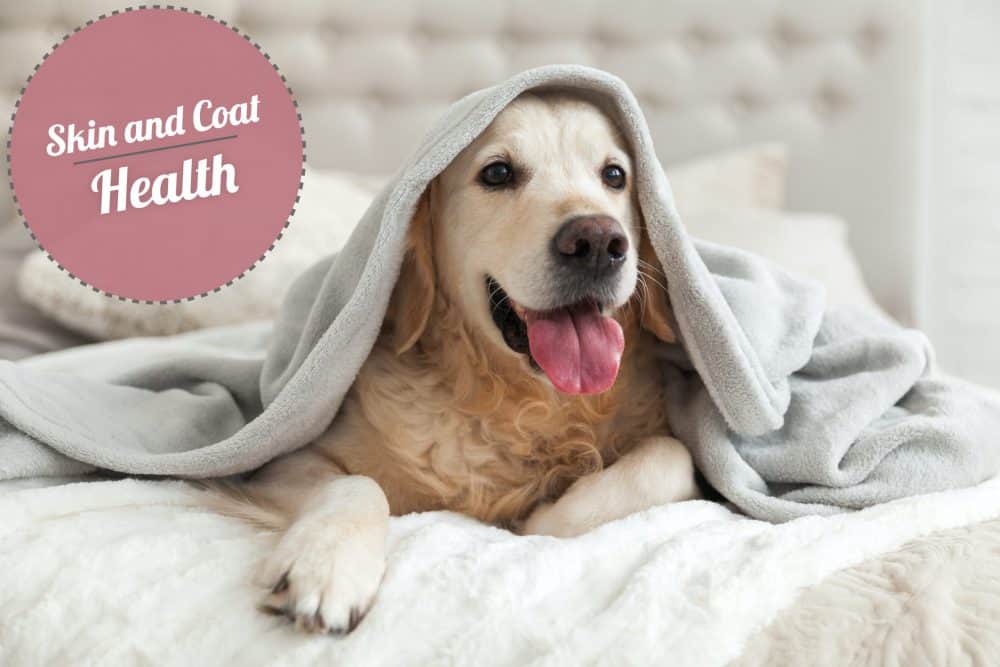Why is skin important to dog and cat health and well-being?
- It is the largest organ of the body.
- It acts as a physical barrier to protect the body from the environment.
- Skin problems may be the first sign of disease in other parts of the body.
Healthy Skin – is free of dandruff, scabs, bumps, and pustules. The hair coat will be intact (no bald spots), shiny, and mat-free.
- No redness or hair loss around the eyes or on the muzzle.
- The ear is clean, inside and out; there is no redness, inflammation, or discharge (other than a small amount of ear wax).
- There is no chewing or patchy hair. The hair is thick over most of the body. There is no redness on the skin.
- The abdomen (stomach) shows no redness or inflammation. The hair covering the abdomen and inner thighs will be thinner than in other areas.
- The paws have no hair loss, redness, or swelling.
Unhealthy Skin – may have dandruff, scabs, bumps, and pustules. The hair coat may have missing fur or be dull, dry, and/or matted. Other signs may include:
- Redness and hair loss around the eyes and on the muzzle.
- The earflap may be inflamed with a yellowish, crusty discharge.
- The coat may be patchy and missing hair. The exposed skin may be red and scaly.
- The abdomen (stomach) may show red, inflamed spots.
- The paws may have hair loss, inflammation, and redness between the toes and on top of the paw.
Many skin diseases have similar symptoms. If you see abnormal skin, even if it looks like something you have seen before, it is important to consult with your veterinarian for proper diagnoses and treatment. Give us a call so we can get the problem under control early when it is easier and less costly.
